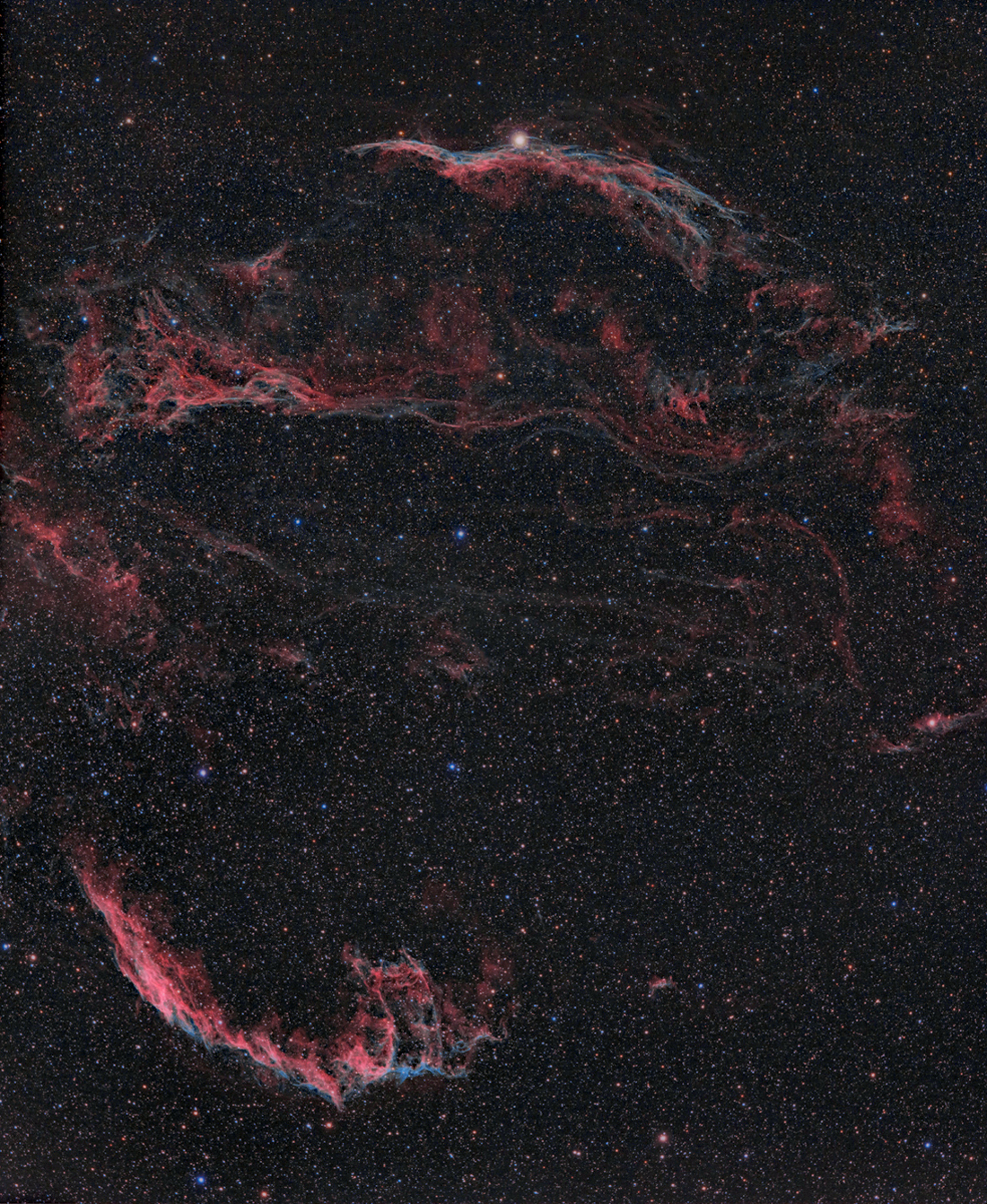| CYGNUS LOOP with WESTERN VEIL, PICKERING’S TRIANGLE and EASTERN VEIL |
 |
The Veil Nebula is a supernova remnant, many portions of which have acquired their own individual names and catalogue identifiers. The source supernova was a star 20 times more massive than the Sun, which exploded around 8,000 years ago. The remnants have since expanded to cover an large area of the sky. The distance to the nebula is about 1,470 light-years. The names Veil Nebula, Cirrus Nebula, and Filamentary Nebula generally refer to all the visible structure of the remnant, or even to the entire loop itself. The structure is so large that several NGC numbers were assigned to various arcs of the nebula. There are three main visual components: Technical info: TS 80mm f6 APO triplet refractor 2 panel mosaic: IDAS-LPS-P2 filter (RGB for the stars) Acquisition: Post Processing: |